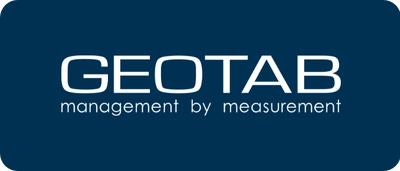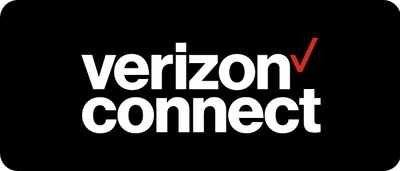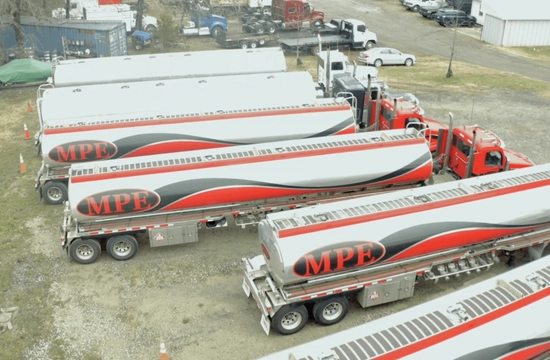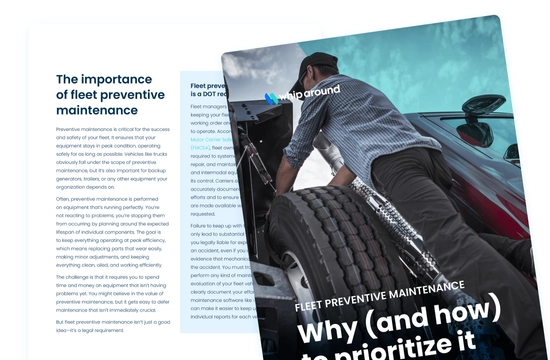- SolutionsMaintenance
Fleet maintenance software for vehicles and equipment
ComplianceEverything you need to keep your fleet compliant with the DOT
InspectionsVehicle inspection software that keeps you compliant and cuts costs
ReportingAccess the vital data you need to optimize the performance of your fleet
Fuel ManagementTrack fuel usage in real time and maximize profitability through fuel cost tracking
IntegrationsSee all - CustomersFeatured Case StudiesSee all
![Spartan Logistics]() Spartan Logistics
Spartan LogisticsSpartan Logistics is a safer, more efficient business by keeping their maintenance up and costs down with Whip Around.
View case study![Monster Tree Service]() Monster Tree Service
Monster Tree ServiceWhip Around gives Monster Tree Service visibility on vehicle & equipment location, condition, what work is due and what has been completed
View case study![Northwest Repossession]() Northwest Repossession
Northwest RepossessionNorthwest Repossession saves tens of thousands of dollars every year by staying totally compliant with Whip Around.
View case study![M. Pittman Enterprises]() M. Pittman Enterprises
M. Pittman EnterprisesThe team at M. Pittman turned to Whip Around for a digital solution to take the guesswork out of their preventive maintenance process.
View case study - ResourcesFeatured ContentSee all
![eBook: Fleet preventive maintenance: Why (and how) to prioritize it]() eBook: Fleet preventive maintenance: Why (and how) to prioritize it
eBook: Fleet preventive maintenance: Why (and how) to prioritize itEverything you need to make preventive maintenance a priority for your fleet.
View eBook![eBook: Creating a preemptive culture of safety, compliance, and preventive maintenance]() eBook: Creating a preemptive culture of safety, compliance, and preventive maintenance
eBook: Creating a preemptive culture of safety, compliance, and preventive maintenanceHow to build a preemptive culture of safety in six steps.
View eBookResource Type - Pricing
How to Choose the Right Fleet Maintenance Software for Your Business

Fleet maintenance software is a management application that allows fleet managers to reduce maintenance costs, improve fleet performance, and assist in regulatory and legal compliance.
Among its many functions, fleet maintenance software streamlines preventative and reactive maintenance, allowing you to catch small concerns before they become huge problems (and also take care of huge problems, when they occur). It helps manage schedules, organize work, and coordinate downtime across the entire fleet through a centralized system. Fleets of all sizes and types benefit from this software, including semi-trucks, delivery vehicles, rental cars, construction equipment, buses, taxis, aircraft, and more.
Without fleet maintenance software, fleet managers often find themselves in an endless battle against several inefficient systems. They’re stuck relying on reams of paper, whiteboards, and desk calendars to manage critical (and often time-sensitive) information. These analog systems are vulnerable to all kinds of human error: inspections get skipped, work orders get ignored, and sometimes entire assets go missing.
A digital process is much easier to manage. Set-and-forget notifications alert you when it’s time for scheduled maintenance or when a warranty is set to expire. The entire history of every vehicle in your fleet is right at your fingertips—including inspection reports, registration, mechanic sign-offs, and fuel reports. Maintenance software helps you decide when to retire a truck, how to keep up with new safety regulations, how many of a certain part you need to keep in inventory for repairs, and more.
Fleet maintenance software’s cost usually depends on fleet size covered and features included. Solutions range from comprehensive, enterprise-level platforms to specialized apps for small businesses.
That means choosing the right fleet maintenance software (or collection of solutions) can be a challenge, but following these guidelines can help you arrive at a decision that keeps your fleet running at the right price.
In this guide, we’ll cover:
- How your fleet size and goals should determine your needs
- What features to look for in fleet maintenance software
- How to compare pricing models
- Why you need fleet maintenance software
Here’s how to make the choice that’s right for your fleet.
How to choose the right fleet maintenance software
There are a few options out there, but you want to be careful to make the right choice. After all, you don’t want to go through all the work of getting buy-in and adoption for a new piece of tech, only to find out that it isn’t the right fit or doesn’t address the issues you were hoping it would.
Here are some factors and features you’ll want to consider as you make your decision.
Consider your fleet size and growth aspirations
Fleets of equipment or vehicles come in all shapes and sizes. The needs and focus of an excavating business are entirely different from an ambulance service or a trucking company. So when looking at maintenance management solutions, it’s essential to take stock of both your current needs and long-term objectives.
You want fleet maintenance software that offers the features you need right now, but you don’t want to be taken in by a bunch of features you don’t need. And you want the features you do need to still be helpful if you decide to grow your fleet. Bottom line: when you’re choosing fleet maintenance software, you should consider your future plans. Fleet size can dramatically impact pricing and feature needs.
Compare fleet maintenance software features
You may already know exactly what features you need from a fleet maintenance platform—or if you’re just beginning your search for a solution, you may only have one or two in mind. When choosing a software solution, start with a comprehensive view of the features that these types of tools entail, then choose the vendor that best meets your needs.
These are some of the most sought-after fleet maintenance software features:
- Digital storage and reporting
- Cost tracking
- Fuel management
- Mileage tracking
- Maintenance scheduling
- Parts management
- Service history
- Tire management
- Work order management
- Digital forms
- Faults management
- Photo capture
- Mechanic sign-off
- Management dashboard and reporting
Important: Every vendor will sell you on their features and benefits (us included), and there are multiple capable vendors in this space. It’s up to you to prioritize which features are most important, and investigate how well it is executed by each vendor (at Whip Around you can also get a demo with one of our consultants). You may find yourself choosing a general, all-in-one solution, but often fleet managers choose piecemeal solutions so as to best cover a few critical areas.
Digital storage and reporting
There was a time when the most efficient way to track a vehicle’s maintenance and compliance history was by maintaining individual files on every asset in a cabinet jammed full of paper warranties, maintenance histories, and compliance reports. But those days are long over.
Every fleet maintenance software solution will digitize this process. But they won’t all do it in the same way. Consider:
- The ease of generating and navigating reports and the user interface. Is the software easy to learn and use?
- Whether the solution utilizes cloud storage, enabling you to access fleet information from any device or location. Does it sync inspection, asset, and work order information in real-time?
Cost tracking
Some fleet maintenance platforms alert you if a particular vehicle is costing too much to keep on the road. At the very least, they should make it easy to see an asset’s cost history at a glance, removing the need for you to maintain an elaborate spreadsheet. Having this level of visibility can help fleet managers and mechanics identify particularly costly vehicles, routes, and drivers.
Fuel management
Fuel, and its rising costs, makes efficiency essential. A good fleet management software system delivers driving behavior back to the manager, who can then correct fuel-wasting driving mistakes. A system that tracks refueling receipts will also help the manager monitor the health of the vehicle. This information helps the manager make changes to reduce the amount of wasted fuel within the fleet. (As you can imagine, this is also very helpful information to have on hand when considering replacing traditional vehicles with alternative-fueled assets.)
Mileage tracking
Most fleet maintenance solutions will offer some sort of mileage and engine hour tracking solution. But how is that mileage being tracked? Some options plug into your onboard diagnostics system which requires an investment into and installation of equipment. Others, like Whip Around, use optical character recognition to make the process as easy as pointing your camera at your odometer.
And more importantly, what happens once that information is captured? Does it get added to an asset’s profile? Does it trigger automatic maintenance reminders? Mileage tracking should integrate with your workflow and empower your maintenance teams to be proactive with preventative upkeep.
Maintenance scheduling
Scheduled preventative maintenance is integral to safety and protecting your business’ margins, but it’s also required by the DOT. If you’ve struggled to create and stick to a planned preventative maintenance schedule, or you’ve found yourself with lots of unscheduled maintenance, you’ll want to prioritize software that helps in this area.
Whip Around gives you maintenance reminders whenever something is due for a cleaning, replacement, or a top-off. You can see all upcoming maintenance in a single dashboard across all your assets. Maintenance reminders can include order lists for parts and customized alerts with any asset-specific considerations, ensuring your team members always have all the information they need to efficiently address issues.
The #1 thing you should expect from a fleet maintenance solution in this area is that it would take all the pressure off of you to juggle all your fleet’s maintenance scheduling needs.
Parts management
Fleet maintenance software can save you from putting a truck out of commission because of a simple part that should have been in stock—but it can also keep you from tying up unnecessary inventory dollars in overstocked parts. Some tools, like Whip Around, even send reorder notifications when it’s time to re-up on given parts.
If managing parts inventory has been a struggle in the past, or if you suspect that this is an area of the business that could be run more efficiently, this is a feature you should look for when considering fleet maintenance tools.
Service history
You should already be keeping a detailed service history for every asset in your fleet. What’s more, you should be able to reference that history at any time. For many fleet managers, logging and storing these documents is a tedious process, and it only becomes more difficult as your fleet grows.
If keeping and accessing service history is troublesome for you, you will want to choose a fleet maintenance software that does this automatically. You will not only save time in recording each vehicle’ service history, but you will also save yourself from ever needing to go hunting for it.
Tire management
While a small fleet may be able to track their tires’ wear and tear manually, keeping up with hundreds/thousands of tires is likely not the best use of your time. Some fleet maintenance programs automatically log tire usage for you, so your maintenance team knows which tires need to be rotated, repaired, or replaced, and when.
If you are managing a fleet of more than ten vehicles, you will likely benefit from a fleet management solution that includes the ability to monitor and track tire usage and wear.
Work order management
If you have a fleet with more than 50 assets, you likely have one (or more) in-house workshops to handle your maintenance needs. And you’re likely using a fleet management solution like RTA to manage those internal workshops. In that case, you don’t need to abandon what’s working—you need a solution like Whip Around that integrates with your existing software. Whip Around can record and send mileage and faults to your other systems, triggering maintenance reminders automatically.
If your fleet isn’t large enough to warrant an in-house maintenance crew, that’s fine too. Whip Around has a work order system baked right in that will help you stay on top of preventative care and deal with reactive maintenance issues before they become a problem.
Digital forms
Digital forms give fleet managers an enormous advantage. Whereas paper forms can be easily lost, illegibly filled out, or lazily “pencil-whipped,” digital forms force all entries to be clear, thorough, and handwriting-proof.
Some fleet maintenance software platforms (like Whip Around) include apps that allow drivers to fill out forms on their smart devices. This means the completed form information is immediately logged in your database for easy future access. Our solution also requires drivers to use their phone camera, which verifies odometer information, vehicle damage, etc.
This is an important capability of fleet maintenance software, and when choosing a vendor, you will want to explore not just whether or not they offer digital forms, but also what the digital form-building experience is like. Some solutions give you access to a library of forms, which you can tweak to fit your needs. Some solutions allow you to create your own forms. (Whip Around lets you do all this.)
Faults management
When it comes to fault management, time is of the essence.
Fleet maintenance software can give you real-time updates when issues occur, so you can respond immediately. Maybe that means ordering a part, so it’s ready when that vehicle pulls in, or it could mean immediately assigning that problem to an internal mechanic or external vendor. Your software can also help you comply with FMSCA 396.11 by ensuring you get a mechanic’s signature verifying the issue has been resolved before bringing your vehicle back into operation. In the end, it ensures that no reported issues are lost, and it holds both drivers and mechanics accountable for reporting and fixing them.
If reactive maintenance is disrupting your workflows, work orders are falling through the cracks, or drivers are complaining about work orders being dismissed, prioritize fleet maintenance software with faults management capabilities.
Photo capture
The ability to take and upload photos during the inspection process is a game-changer: it ensures that drivers are actually out walking around their vehicle during inspections, rather than simply checking boxes from the cab. Plus, it gives managers and mechanics more visibility into recorded faults, and it helps them better understand problems that drivers might be struggling to communicate accurately.
If pencil-whipping is an issue in your fleet, camera integration is likely a feature you will want to be covered by your fleet maintenance solution.
Mechanic sign-off
Driver Vehicle Inspection Reporting (DVIR) requires a mechanic signature on corrected faults. Some fleet maintenance software facilitates e-signatures for this, which allows you to track who signed off on a given correction. These solutions then store each specific vehicle’s information in the cloud, making it easy to reference in the future.
This feature keeps your information organized, but it can prove invaluable in the unfortunate situation of a faulty vehicle being signed off on without proper repairs. Knowing exactly who signed off on a given report (and when) keeps your mechanics accountable, and gives you the transparency you need if you ever need to get to the bottom of an investigation.
If you’re managing both a fleet of drivers and a crew of mechanics, this is a feature you will likely want to make sure is included in your fleet maintenance solution.
Management dashboard and reporting
All the information in the world doesn’t do you any good if you can’t access it when you need it. When you’re choosing fleet management software, make sure the dashboards and user interface display information in an intuitive and informative way. You should be able to quickly gain insight into your fleet’s current status and drill down into specific information about particular vehicles.
It’s not enough to have all these details available. You want them laid out in a logical and useful way.
Evaluate based on cost (and pricing model)
The cost of fleet maintenance software is usually tied to the features it includes and the number of vehicles you apply it to. Expect any quote to be a function of your fleet size and the coverage provided by the software.
But don’t fall into the trap of paying for features. Fleet maintenance software’s value comes from reducing costs elsewhere. So focus your budget on a solution or set of solutions that will minimize your maintenance expenses on parts, labor, legal fees, fines, and replacements.
At Whip Around, you’re never paying for more than you need. Features are bundled into tiers, and with each tier, you’re only paying for the number of vehicles in your fleet. And by paying annually instead of monthly, you save on each vehicle. For more information on tiers and features, visit the Whip Around pricing page—or book a free demo to talk with a consultant today.
The cost of not using fleet maintenance software
Preventive maintenance is profoundly less expensive than unscheduled maintenance. Allowing a non-urgent $75 repair to go unfixed today could translate to tens of thousands of dollars tomorrow. And as you add trucks and equipment to your fleet, this cost increases exponentially.
But the direct cost of unplanned repairs might not even be the most significant expense. Unscheduled maintenance means unscheduled downtime. When a vehicle is left in the garage, money is left on the table. Unscheduled maintenance and unplanned downtime cut into your bottom line and increase the vehicle’s ownership cost.
The impact of unplanned downtime goes way beyond the cost associated with the vehicle. The collateral damage is costly. Having equipment out of commission puts more load and wear on other equipment in the field. Or it could mean potentially having to rent or buy equipment to keep production or deliveries on time. It could also mean drivers aren’t getting paid, deadlines aren’t being met, and customers aren’t happy.
It’s difficult to adequately measure the cumulative impact of unscheduled downtime.
A proactive fleet maintenance system can alleviate runaway costs associated with unscheduled maintenance and downtime. Maintenance software alerts you when preventive care is needed (based on the criteria you choose) and makes it a cinch to schedule and receive sign-off upon completion of all maintenance and repairs—all within a single platform. You get to manage maintenance in a way that doesn’t negatively impact daily operations—and gives you peace of mind that upkeep and critical faults aren’t being overlooked and that your cost of operation is more in line with your budgeted forecasts.
Whip Around fleet maintenance software
Fleet management should be all about managing the fleet, not chasing down information and trying to make sense of data pulled from a number of siloed sources..
Contact Whip Around to schedule a demo or you can start a free trial today and see what we can do for you.









